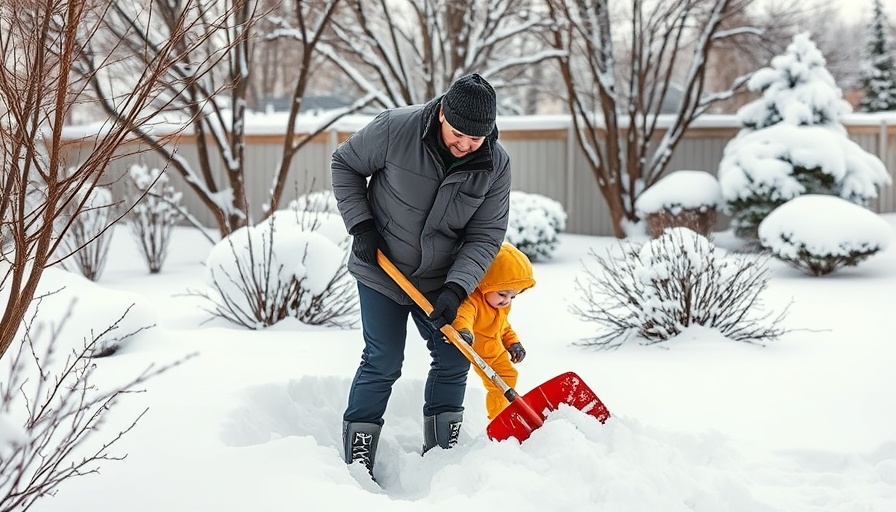
Winter’s Hidden Dangers: Understanding Snow Shoveling Injuries
As winter sweeps across the region, the harsh weather brings not just picturesque snowfalls, but also an increased risk of injuries related to snow shoveling. Many are unaware of the strain this common winter chore places on the body, leaving individuals vulnerable to various injuries. Strains, sprains, and even more severe conditions can arise from something as straightforward as clearing a driveway or a sidewalk.
Why Preparation is Key
Before you even think about lifting a shovel, consider your physical condition. Cold weather can stiffen your muscles, making them more susceptible to injury. Those who are not physically active or who have pre-existing conditions are particularly predisposed to issues such as back pain or joint problems. Preparing your body for the task ahead can significantly mitigate these risks.
Effective Techniques for Safe Shoveling
Learning how to shovel snow correctly can be a game-changer for preventing injuries. Here are some top tips to ensure you keep yourself safe:
- Dress Appropriately: Layering your clothing helps to keep your muscles warm and flexible. A versatile outfit can enhance your comfort and maintain maximum mobility.
- Warm-Up Exercises: Engage in light stretching to loosen your muscles before heading outdoors. This simple step can help prevent muscle strains.
- Push, Don’t Lift: Try to push the snow instead of lifting it. This technique minimizes the load on your back and legs.
- Lift Properly: If you must lift snow, bend your knees, keep your back straight, and lift with your legs, not your back. This method reduces stress on your spine.
- Take Breaks: Frequent rest periods give your body a chance to recover, reducing the risk of fatigue-related injuries.
- Watch for Warning Signs: Pay attention to your body. If you experience any pain, shortness of breath, or excessive fatigue, stop immediately and consider seeking medical attention.
The Impact of Cold Weather on the Body
Cold temperatures can have a significant impact on the body, often leading to muscle contractions that reduce blood flow to your extremities. Understanding this effect can aid in your preparation for shoveling. Be conscious of how your body responds when the temperatures drop and adapt your shoveling routines accordingly.
Recognizing Common Injuries
Injuries can range from mild to severe, depending on various factors, including a person’s physical condition and shoveling technique. Here are common injuries associated with snow shoveling:
- Muscle Strains: Often a result of overexertion or incorrect lifting techniques.
- Back Injuries: Poor posture while lifting can lead to substantial back pain or even chronic conditions.
- Slip and Fall Injuries: Icy sidewalks can pose a slipping hazard, leading to falls that may result in fractures.
Long-Term Practices for Safety
You can cultivate a healthy approach to winter activities by incorporating certain long-term practices into your routine:
- Regular Exercise: Staying active year-round can bolster your strength and flexibility, making you less prone to injuries during winter chores.
- Interest in Health Awareness: Being informed about your body and its response to cold weather can motivate you to prioritize safety.
- Consult Professionals: When in doubt, professional advice from a healthcare provider can offer tailored strategies to protect yourself.
Final Thoughts: Be Prepared This Winter
Snow shoveling doesn’t have to lead to injury if you take necessary precautions. By understanding your body’s needs and employing proper techniques, you can enjoy a safer and more productive winter season. Don’t let the snow become a source of stress; equip yourself with knowledge and stay ahead of any potential injuries.
 Add Row
Add Row  Add
Add 




 Add Row
Add Row  Add
Add 

Write A Comment